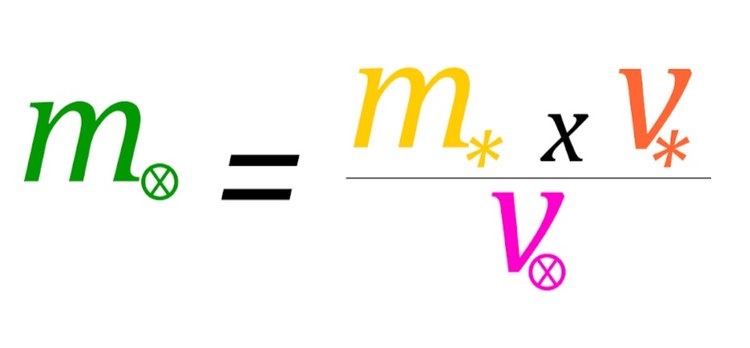Task 1: Determining the Mass of Your Exoplanet
Find the velocity of the star.


Look confusing? Don’t worry, you don’t have to do this math by hand! Input your numbers into the google sheet as directed below and the equations will be automatically calculated for you.
First, we need to find the radial velocity of the star. To do this, we will interpret data from a radial velocity curve graph of your exoplanet’s parent star.

Write the velocity of the star in cell B4 of the Google Sheet.
the google sheet support
Receive the mass of the star.

Next, request the mass of the star from the Host Star team. Send the following message in the chat.

While you wait... did you know?
Watch the following video about how exoplanets get their names while you wait for the Host Star team to share the mass of the star. If you have already received the information you need, you may skip this video and continue working through your task card.
When you receive the mass of the star, send the following confirmation message to the Host Star team.
“Mass team to Host Star team. Data received. Thank you.”
Then, enter the mass of the star into cell B2 of the Google Sheet below.
Calculate the velocity of the planet.

To calculate the velocity of the planet, you need the following variables:
The velocity of the planet will be calculated using the following equation:

You have already received the mass of the star from the Host Star team. You will now need the planet’s period from the Period team to calculate the velocity of the planet.
Send the following message to the Period team in the chat. Click here for instructions on how to send messages.
Send the following message to the Period team in the chat. Click here for instructions on how to send messages.
while you wait... did you know?

When you receive the period of the planet, send the following message in the chat.
“Mass team to Period team. Data received. Thank you.”
Then, enter the data for the planet’s period into cell B3 of the Google Sheet below. The solution for planet velocity will be calculated automatically in cell B4.
Then, enter the data for the planet’s period into cell B3 of the Google Sheet below. The solution for planet velocity will be calculated automatically in cell B4.
The Google Sheet will now complete the following equation in order to determine the exoplanet's mass. The mass of the planet will be automatically calculated in cell B5 of the Google Sheet below.

Check cell B5 of the Google Sheet below to see the planet mass.

You will share the planet mass with the following team:
If the Radius team has already requested the planet mass, send it in the chat now. If the Radius team has not yet sent a request, be prepared to send the information when the request arrives.

Excellent work! You used some complicated formulas to calculate the mass of your exoplanet. With this information, you’re ready to collaborate with the Radius team to find the average planet density.



